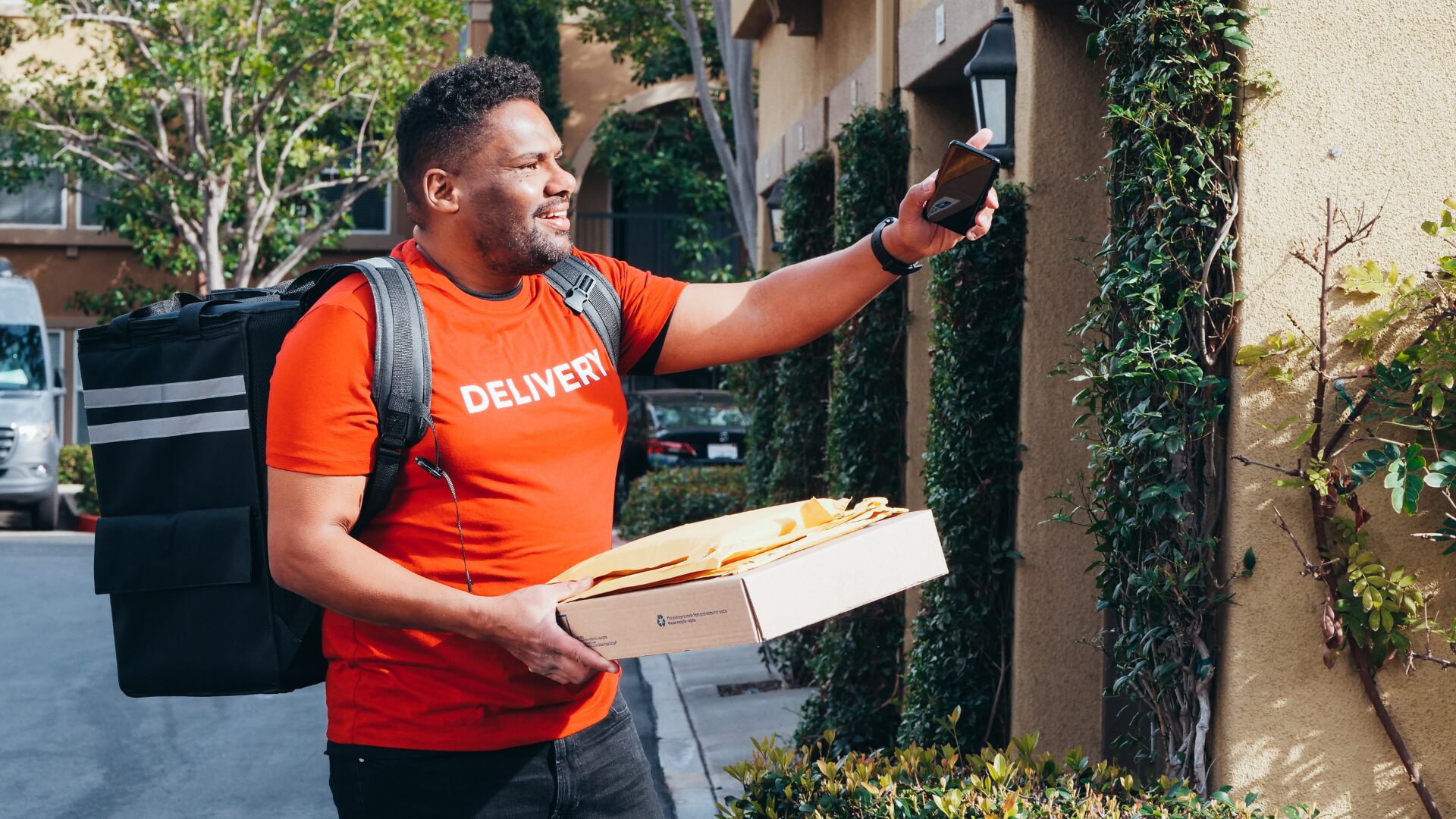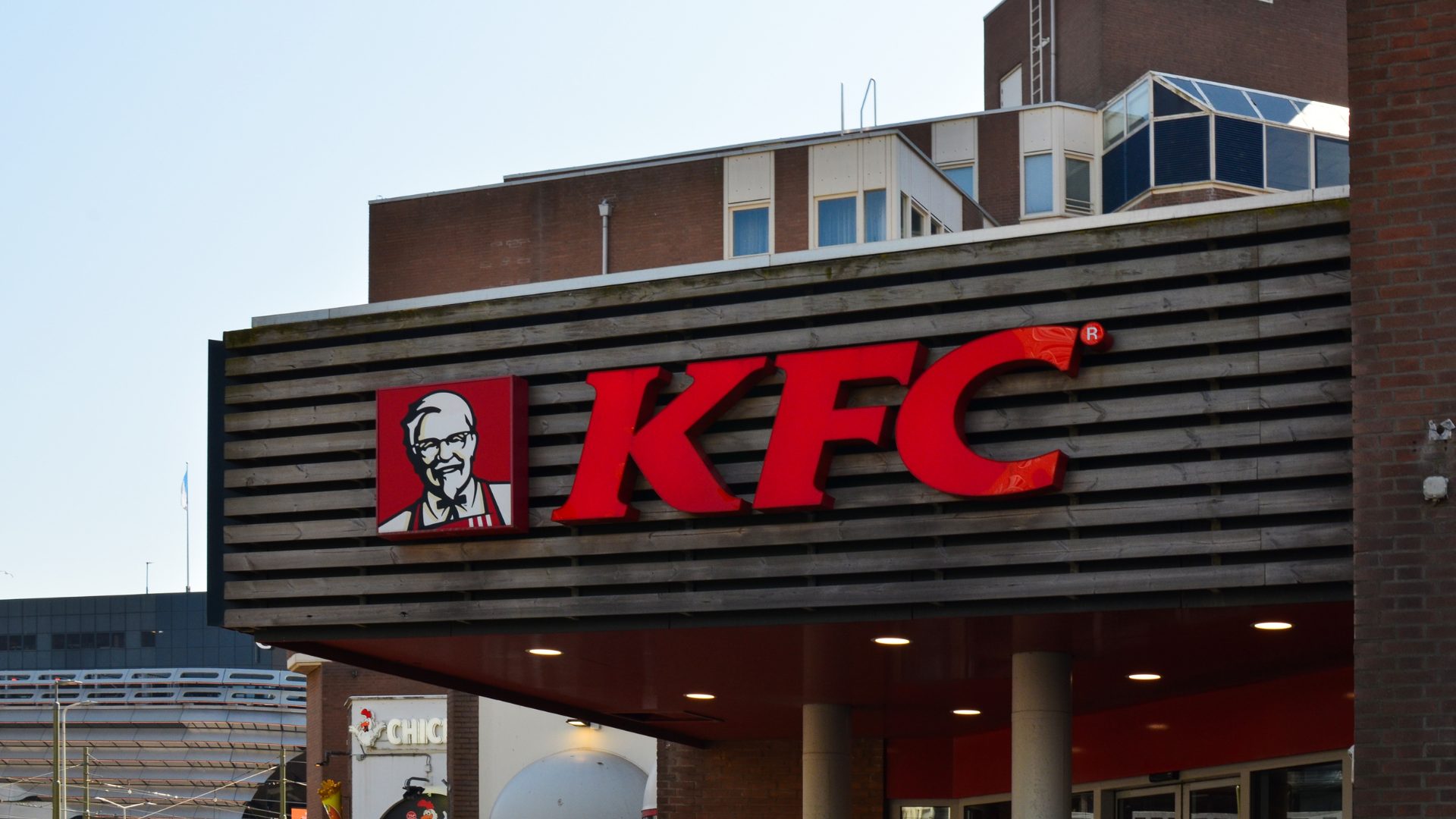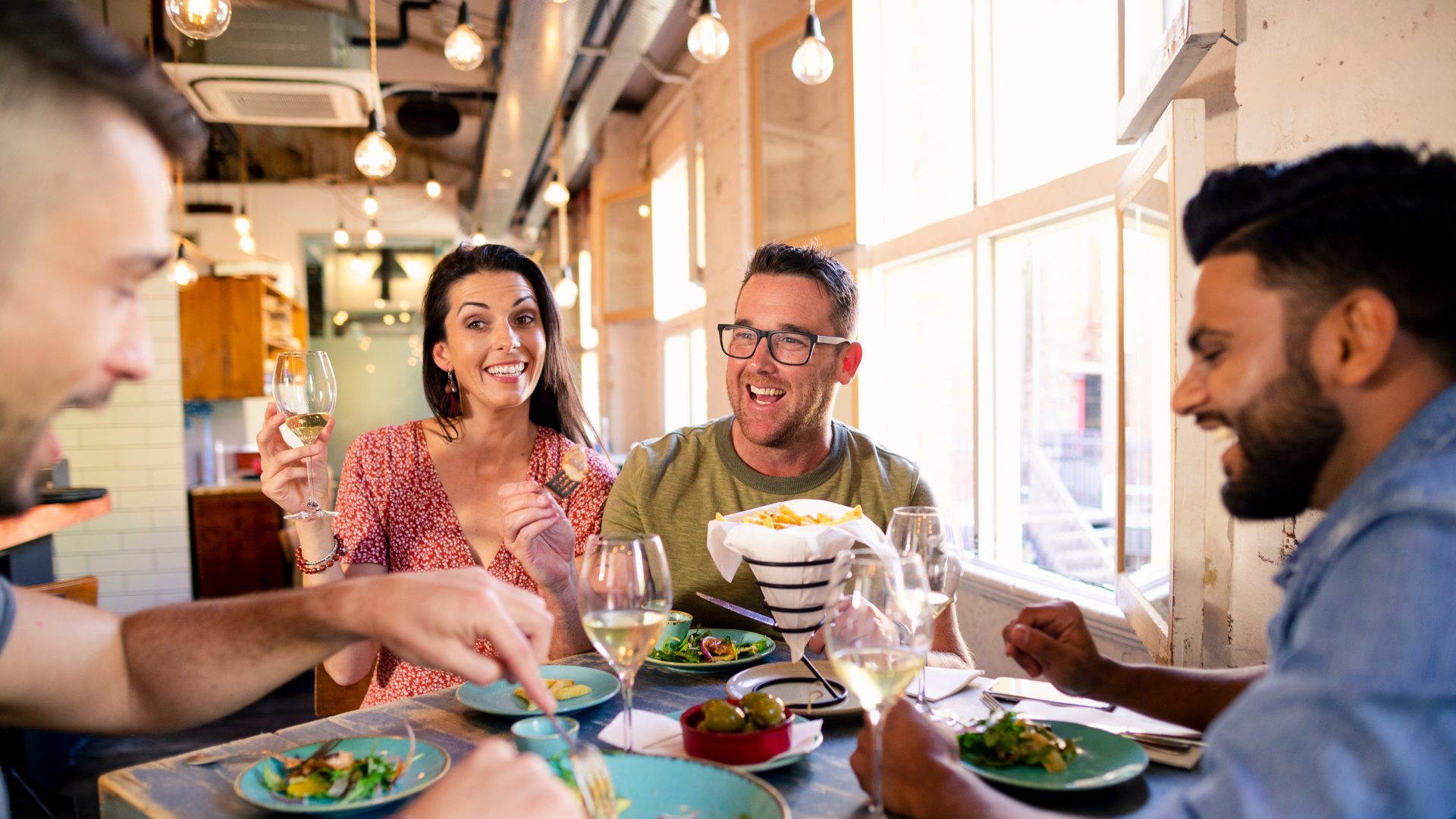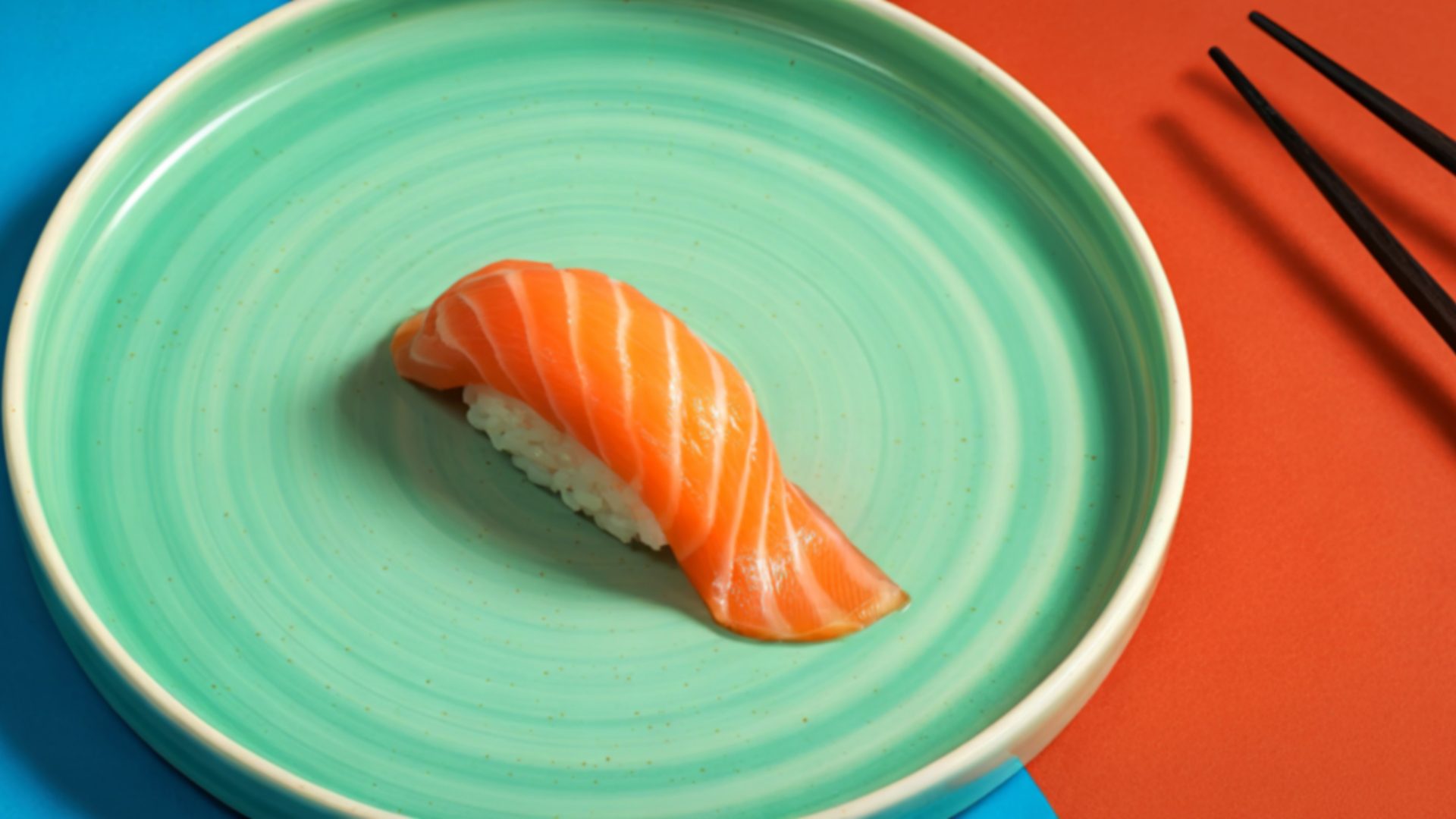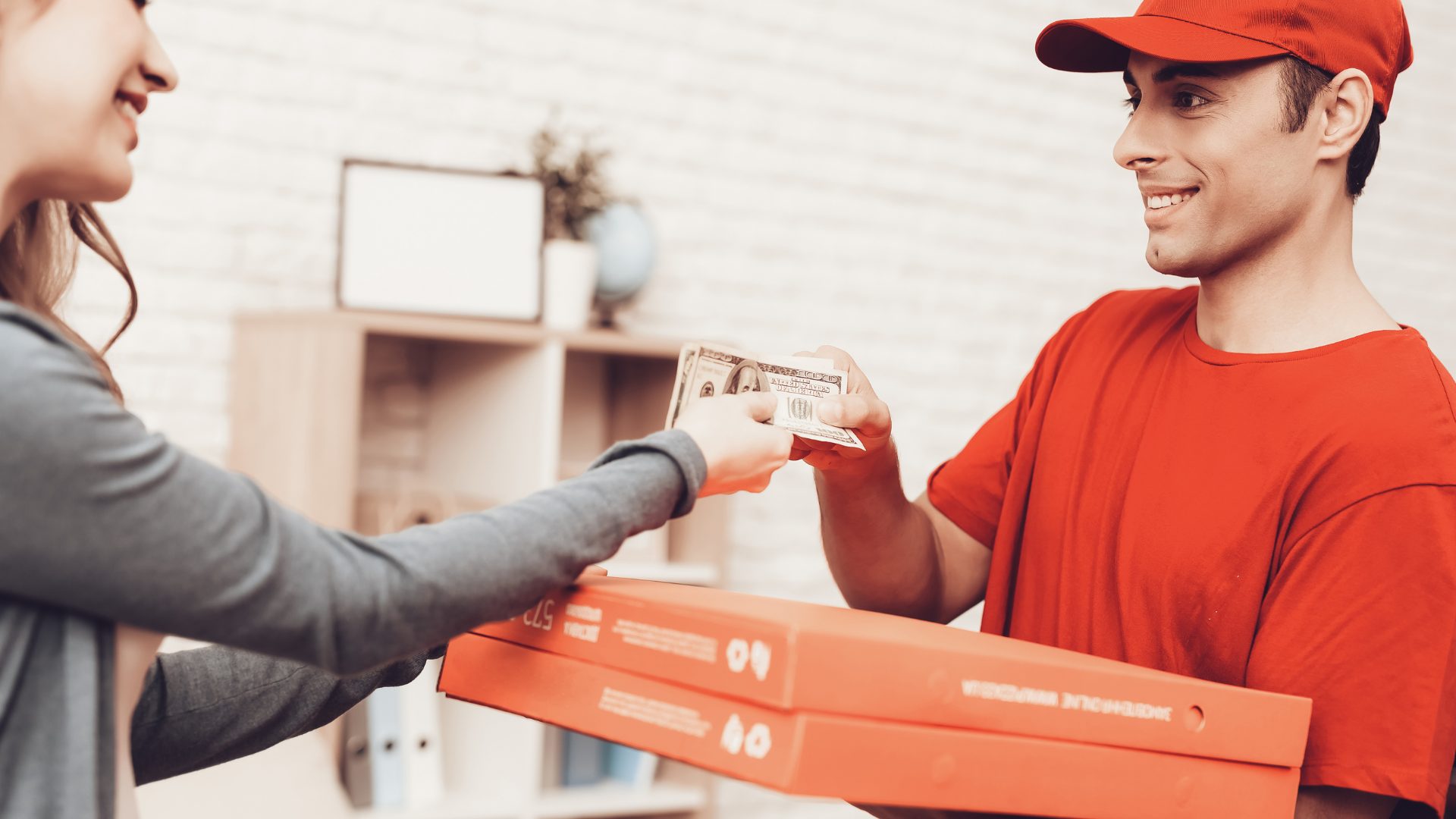Over the past year, shares of delivery businesses Uber, DoorDash, and Instacart on average have gained 58%. It’s hugely impressive performance in the context of the broader market: the Standard & Poor’s 500 is up 12% over the same period, and the NASDAQ 100 (which is more weighted toward “Big Tech” names) about 15%.
The performance is even more impressive given that the economic environment doesn’t suggest the sector would be roaring right now. A year ago, there was a case that third-party delivery already was headed for trouble. There was pushback on the fees and tips that can add significantly to the cost of a delivery order – and then the external environment appeared to get worse.
The rising cost of food and services was a key issue in the presidential election in November. At the start of 2025, consumer sentiment turned down, and the announcement of tariffs sent the metric lower (though the most recent reading did show a sharp rebound).
Customers Keep Spending on DoorDash, Instacart, and Uber
Heading into earnings this month, macroeconomic news suggested that delivery customers would pull back. Indeed, the results from the industry’s customers implied the same. With only a few exceptions, restaurant chains were seeing pressure: in the first quarter, even Chipotle saw its same-restaurant sales decline year-over-year, for the first time since 2020. In grocery, throughout the first few months of the year both retailers and their suppliers talked endlessly about “value-seeking” behavior from customers. However …
The most recent set of results from delivery platforms show customers remain willing to pay up.
In Q1, Instacart orders were up 14% year-over-year. DoorDash orders were +18%, and the company appears to have done even better in grocery: in that category, the company took market share and saw “accelerating average spend”. Uber delivery orders rose 15% overall.
At a conference this month, DoorDash chief financial officer Ravi Inukonda got to the heart of why the category has done so well in the face of seeming external headwinds. For one, even during recessions, “food, in general as a category, has been pretty resilient.” But that structural defensiveness strength is now augmented by a simple but relatively obvious fact: “the product has gotten better”.
For DoorDash, this means more grocers on the platform and increased adoption of subscription service DashPass. Instacart has trumpeted strong execution and continued benefits from scale: after Q4, the company said that over half of orders were accepted by shoppers who were already within a mile of the store. Its density is getting to the point where it is testing the ability to pick up out-of-stock items from another store. Uber’s grocery and retail business started to add to profit in the fourth quarter, meaning it can further fine-tune its offering while benefiting from the scale created by its rideshare business.
Meanwhile, in the U.S. competition appears all but extinguished.
The Rise of a New Delivery Dynasty
After trying for two years, Just Eat Takeaway finally sold GrubHub for just $650 million – less than one-tenth what it paid for the business in 2021. JET promptly sold itself within months, a strong signal that GrubHub had to go before the rest of the business could be dealt. The $650M purchase price for GrubHub on its own shows how much GrubHub’s share has shrunk – Instacart and DoorDash alone have a combined market capitalization of about $100 billion – and there’s little chance of that company or a new entrant finding a way to scale. At this point, the three existing players have too many drivers, too many customers, and too much data for anyone to successfully play catch-up.
Those advantages can propel the three big players into a virtuous circle. The experience gets better, with shoppers constantly within range of both stores and of end customers. Data underpins a growing advertising business, which improves the efficiency of independent retailers in particular, while also providing revenue for the platforms that’s almost pure profit.
All three companies are running that data through generative AI models to suggest new items and new offerings for consumers and improve driver performance
And so consumers in turn can get better service, better pricing – DoorDash’s Inukonda said his company lowered fees for DashPass grocery customers in Q1 – and more options in terms of both products and retailers. In response, they should spend more – which means more data, more advertising, and more targeted promotions and offerings for the platforms, which means a better product, and more revenue.
In the long term, when autonomous driving becomes functional, the services (and prices) provided by the industry get even better.
It’s that positive long-term outlook that has driven delivery stocks higher even in an environment where investors have the right to be nervous in the short term. Simply put, if these businesses can grow orders double-digits now, when consumers are stretched and the platforms are still improving, investors are exceptionally optimistic about what growth is going to look like when the external environment is calmer and execution gets even better.
Vince Martin is an analyst and author whose work has appeared on multiple financial industry websites for more than a decade; he’s currently the lead writer for Wall Street & Main. He has no positions in any companies mentioned.
The Food Institute Podcast
Just how difficult is it to scale a better-for-you snack company? Rebecca Brady, founder and CEO of Top Seedz, shares how she turned a homegrown idea into a rapidly scaling snack brand and breaks down the strategy behind her growth, from bootstrapping production to landing national retail partnerships.


